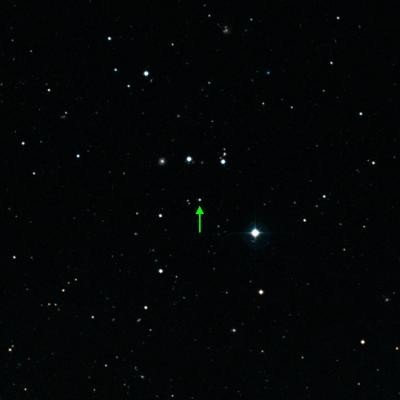At the center of this picture is a very unremarkable looking faint star, too faint to be seen through all but the largest amateur telescopes. It has a mass smaller than that of the Sun and is probably more than 13 billion years old. Credit: ESO/Digitized Sky Survey 2
MUNICH, Germany, Aug. 31 (UPI) -- European astronomers say they've discovered a faint ancient star in the constellation Leo that, given its elemental makeup, "shouldn't exist."
The star has been found to have the lowest amount of elements heavier than helium of any star yet studied, a mass smaller than that of the sun, and is probably more than 13 billion years old, a release from the Munich, Germany headquarters of the European Southern Observatory said Wednesday.
Astronomers refer to any element heavier then hydrogen or helium as "metals."
"A widely accepted theory predicts that stars like this, with low mass and extremely low quantities of metals, shouldn't exist because the clouds of material from which they formed could never have condensed," astronomer Elisabetta Caffau said. "It was surprising to find, for the first time, a star in this 'forbidden zone,' and it means we may have to revisit some of the star formation models."
The astronomers found the proportion of metals in the star is more than 20,000 times smaller than that of the sun. Cosmologists believe the lightest chemical elements -- hydrogen and helium -- were created shortly after the Big Bang, while almost all other elements were formed later inside stars and then spread throughout the universe by supernova explosions.
New stars formed from this enriched medium have higher amounts of metals in their composition than older stars, so the proportion of metals in a star can indicate how old it is.
"The star we have studied is extremely metal-poor, meaning it is very primitive," ESO astronomer Lorenzo Monaco said. "It could be one of the oldest stars ever found."















